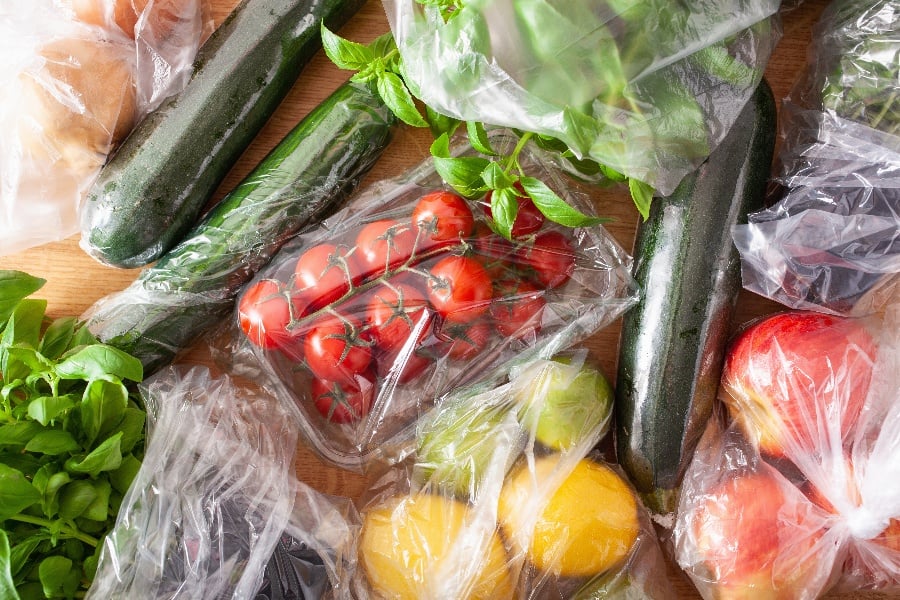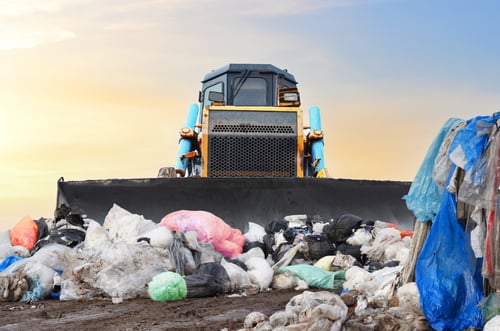How Does Food Waste Affect the Environment?

It’s hard for humans to truly understand the sheer quantity of food wasted. Often, we think about it in terms of ourselves. There are the forgotten leftovers, and the remnants of dinner scraped into the trash. The squash, past its prime, its skin flecked with white; the milk that went sour. But food waste is a social, economic, and environmental concern on a global scale.
How does food waste affect the environment, exactly? Let’s explore.
Food Waste Facts
Most people don’t realize that one-third of the food produced worldwide is wasted.
It averages out to about 1.3 billion tons of food wasted every year—food that’s discarded, incinerated, or otherwise disposed of. And this is food that doesn’t re-enter into any productive utilization; the majority of it is sent to landfills.
That’s certainly the case for the US, the worldwide leader in food waste generation. In fact, food waste is the #1 material in American landfills, accounting for about 24% of municipal solid waste. Americans waste, on average, 80 billion pounds of food a year—and, according to a report from ReFed, we spend $218 billion to grow, process, transport, and dispose of food that’s never been eaten.
This waste happens all along the food supply chain. One of the main causes of food waste in more developed countries is household waste. For example, a typical family of four throws away $1,500 of wasted food in the US. This is in stark contrast to less-developed nations where waste is more likely to occur during production and handling due to the lack of infrastructure.
Totals may not add to 100% due to rounding.
Matt Leonard / Supply Chain Dive, data from WRI analysis of FAO
Food waste is an issue of sustainability. And as we've seen with other sustainable development initiatives, we cannot approach food waste by peering only through one lens, solving those issues alone.
Often, when people speak about food waste they focus on the money lost and the lives that could be saved. It’s an important piece of context to have. Across the globe, approximately 800 million people are suffering from severe malnutrition. Just a quarter of all wasted food (the 1.3 billion tons mentioned earlier) could feed them. Instead, 36 million of them die from lack of food.
But there’s an environmental impact of food waste, too. In this blog, that’s what we’ll explore.
What Happens When We Waste Food?
Nature doesn’t waste anything. When fruit grows on a tree, it’s eaten by animals or it falls from the branch to eventually degrade into the soil. Either way, those nutrients eventually return to the earth to grow something else. It’s cyclical.
The food we waste still has nutrition, energy, and value. It can provide a benefit, whether that be through composting or even creating biogas for renewable energy. However, when we incinerate food waste, we end the food cycle where it is. That food waste provides no benefit—or, rather, it provides a negative benefit, as that waste becomes carbon dioxide (CO2) emissions.
Think of it this way: if food waste was a country, it would be the third-largest producer of carbon dioxide in the world, just after the U.S. & China.
Even without incineration, food waste is harmful to the environment. As it sits in a landfill, rotting away, it emits methane, a greenhouse gas 28-34 times more potent than carbon dioxide and one of the largest contributors to climate change. After fossil fuels and livestock, landfills are the third-largest emitter of methane. And food waste alone represents 8% of total global greenhouse (GHG emissions).

There are ways to offset the harm of these emissions, but reducing emissions needs to be our priority. The best way to do that is by wasting less food in the first place.
Solving the Food Waste Problem
Wasting less food is a global priority—one of the priorities included in the UN’s list of sustainable development goals to achieve by 2030. But solving the food waste problem is complex. Causes for food waste vary by country, but overwhelmingly in richer countries like the US, change needs to happen at the society and consumer level. That requires a multi-faceted approach by sustainability advocates just like you.
To reduce food waste, we need scientists who study it and its effects on the climate. We need educators to teach consumers the realities of food waste and what they can do to combat it. We need innovators to create business incentives to reduce food waste. And we need activists and legislators to lead the charge. And that’s just the beginning.
Bard’s Graduate Programs in Sustainability educate and train future leaders in sustainability who understand that the health of our planet depends on the changes we make today. Sustainability is foundational to our programs—not an afterthought. That’s the Bard difference.
We offer sustainability degrees in the following areas:
Our students learn to change minds, change rules, and change the game entirely. Check out our guide to get an idea of what your future career in sustainability might look like.









